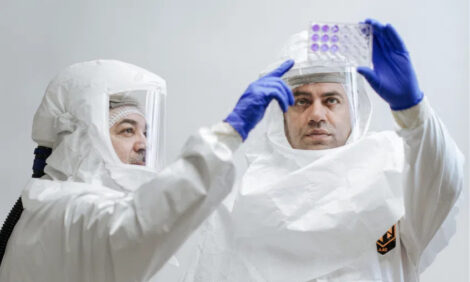



Sulphur Content in Cattle Feeds
Sulphur can increase herd performance, but wrong levels can have diastrous effects. Do you know how much sulphur is in your feedstuffs?Sulphur in cattle diets will increase milk yields and carcase weights, but excessive supplements can lead to death. Distillers grain (DG) is becoming increasingly popular, but are producers aware of the high levels of sulphur it contains. Researchers look at what can be done to minimise these negative effects.
Sulphur is an essential nutrient required for normal growth and reproduction of bacteria in the rumen of cattle. Sulphur is essential for rumen microbial synthesis of certain amino acids (cysteine, cystine and methionine), vitamins (thiamin and biotin) and enzymes. In order for these nutrients to be synthesised in the rumen, sulphur must be present in the diet.
Jolene Kelzer, University of Minnesota Beef Team says, the recommended concentration of sulphur in beef cattle rations is 0.18 - 0.24 per cent of diet dry matter and will depend on production demands. The maximum tolerable level has previously been seen as about 0.4 per cent of diet dry matter but will vary depending on levels of concentrate in rations, says Professor John Wagner, Southeast Colorado Research Center.
Sulphur concentration in feedstuffs and water will depend on location. Ms Kelzer says it is important to analyse for sulphur to know how much cattle are consuming.
Research has shown that slight increases in sulphur contents of feedstuffs can result in improved cow performances. In dairy herds higher production of milk solids, milk fat, milk protein and milk casein have been reported. In beef herds an improvement in average daily weight gain was seen and an increase in carcase grading.
Excess sulphur supplementation will have negative effects on herd performance including sulphur toxicity and polioencephalomalacia (PEM) or polio. PEM can cause cattle to experience blindness, mal coordination, lethargy and seizures. Cattle infected may be observed standing in the corner of the pen with all four feet spread to the extreme corners of their body, says Prof. Wagner. High levels of sulphur in diets will usually result in reduced performance such as a fall in milk production and weight loss, however in extreme cases in can cause death.
Whilst the majority of feedstuffs contain adequate levels of sulphur, the recent expansion in the ethanol industry has resulted in larger amounts of corn milling by-products for animal feed - known as distillers grains (DG). Ms Kelzer says that these feed are excellent sources of energy, protein and digestible fibre but contain high level of sulphur.
During the dry corn milling process used in converting corn starch into ethanol, sulphuric acid is added primarily to control pH during fermentation. As starch is removed during fermentation into ethanol, nutrients normally found in corn are concentrated approximately threefold, but sulphur can be concentrated at much higher levels due to the added sulphuric acid. Therefore, sulphur concentration of DG is highly variable and can range from 0.44 to well over 1.0 per cent sulphur. This, Ms Kelzer says, is why it is important to frequently analyse levels of sulphur in feedstuffs.
With DG providing a low cost, efficient feed to beef producers as well as reducing the costs of ethanol production (eliminating drying), researchers at the University of Nebraska are investigating the effects of increasing the percentage of DG fed as rations. Currently DG compromises about 15 to 20 per cent of feedlot rations, this is hoping to be increased to 50 per cent.
Research at the University of Nebraska has increased roughage levels in DG diets with high sulphur levels. The studies have so far suggested that by increasing the amount of roughage in DG diets, ruminal pH is increased and the risk of PEM is reduced. Feeding increased levels of copper, zinc and iron may also reduce sulphur toxicity, suggests Ms Kelzer.
Researchers from numerous universities have evaluated the effectiveness of feed additives, iono-phores and antibiotics - although no differences were observed in reducing PEM.
The studies into finding methods that allow feeding high sulphur diets to cattle without reducing performance or causing toxicity have been extensive and on-going. At the moment it appears the best method and remedy to prevent sulphur toxicity in cattle is careful regulation of total dietary sulphur intake.
September 2009



